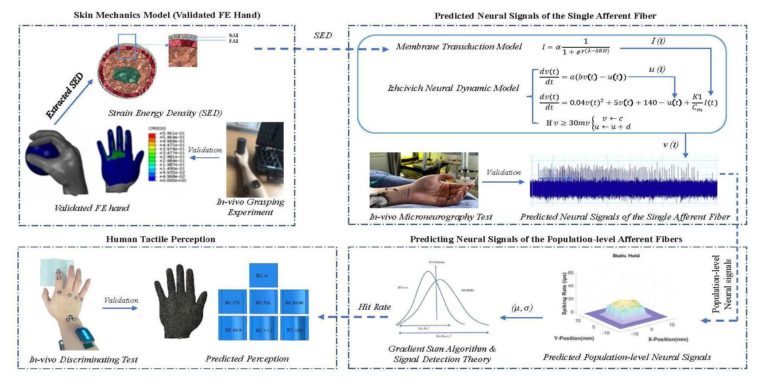First order cutaneous neurons allow object recognition, texture discrimination, and sensorimotor feedback. Their function is well-investigated under passive stimulation while their role during active touch or sensorimotor control is understudied. To understand how human perception and sensorimotor controlling strategy depend on cutaneous neural signals under active tactile exploration, the finite element (FE) hand and Izhikevich neural dynamic model were combined to predict the cutaneous neural dynamics and the resulting perception during a discrimination test.
Using in-vivo microneurography generated single afferent recordings, 75% of the data was applied for the model optimization and another 25% was used for validation. By using this integrated numerical model, the predicted tactile neural signals of the single afferent fibers agreed well with the microneurography test results, achieving the out-of-sample values of 0.94 and 0.82 for slowly adapting type I (SAI) and fast adapting type I unit (FAI) respectively. Similar discriminating capability with the human subject was achieved based on this computational model.
Comparable performance with the published numerical model on predicting the cutaneous neural response under passive stimuli was also presented, ensuring the potential applicability of this multi-level numerical model in studying the human tactile sensing mechanisms during active touch. The predicted population-level 1st order afferent neural signals under active touch suggest that different coding strategies might be applied to the afferent neural signals elicited from different cutaneous neurons simultaneously. This integrated numerical model provides a new concept to effectively study the human tactile sensing and sensorimotor mechanism under the active touch.

